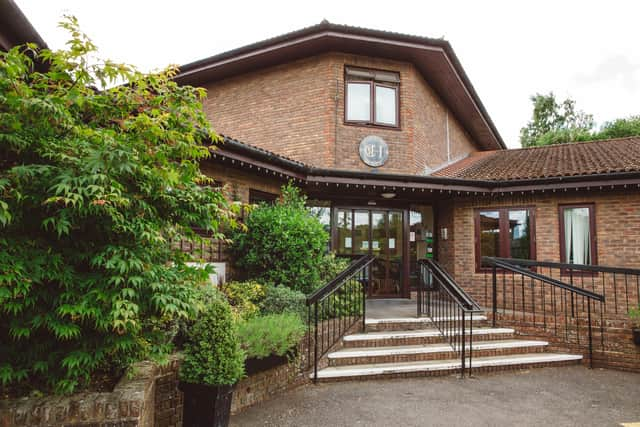How a hospice nurse helped fulfil a woman’s dying wish
and live on Freeview channel 276
Here she shares her experiences and what she gains from mentoring.
“I was first inspired to work in a hospice when I was training as a nurse in Poland. We had a visit from a lady who worked in a Polish hospice, and I was really moved by the way she spoke about the care she gave patients; it was very personal and almost family like.
Advertisement
Hide AdAdvertisement
Hide AdShe spoke about how she helped patients fulfil their wishes and I’ve never forgotten the story she told us about a lady whose dying wish was to buy a red dress. She had always wanted one.


Staff did a collection and brought her a red dress, which she ended up being buried in.
Later, I came across some Polish books written by someone who founded a hospice, and as I was qualifying, I became more interested in working in palliative care.
As well as working at St Catherine’s I do some shifts at a local hospita, Misconceptions about hospices and the care we provide are prevalent there.
Advertisement
Hide AdAdvertisement
Hide AdIt’s quite common for people to think hospices are all about people dying and a depressing place to work, but I always focus on what I can do for people, not what I can’t.
It’s so important for students to spend time at St Catherine’s because when they’re here, they see hospices aren’t like they imagine. I’m passionate about raising awareness of hospices and their work and when you’re newly qualified you need to see what palliative care in this setting is like.
Hospice care is very much about dignity in dying. Working in a hospice you learn about symptom control and see the dignity and personalised care that people are given.
Students can be at St Catherine’s Hospice from two weeks to two months and during their time with us, they work across all our hospice teams. I try to support them in all aspects of their learning as a lot of our students have other commitments alongside their studying.
Advertisement
Hide AdAdvertisement
Hide AdI put myself in a students’ shoes and think how would I like to be taught. I like to make students think on their feet. To try and help them understand anatomy and physiology related to a specific condition, and I ask them to question themselves as they work: What does that particular patient need? What treatment would they suggest for them? That way,
I teach them that routine can’t ever take over. Each person we care for is different so I remind them that they always need to think, What can I do? How can I do this? And I like it when they make their own corrections as they go.
Students spend time working on the wards alongside me, but also spend time with our occupational therapists, physios, emotional, spiritual and welfare teams, and community nurses as well as with other nurses and nursing assistants.
Mentoring is very much about teamwork. It’s important to give students the chance to spend time with all of our teams so that they get a rounded learning opportunity and experience every part of our hospice.
Advertisement
Hide AdAdvertisement
Hide Ad